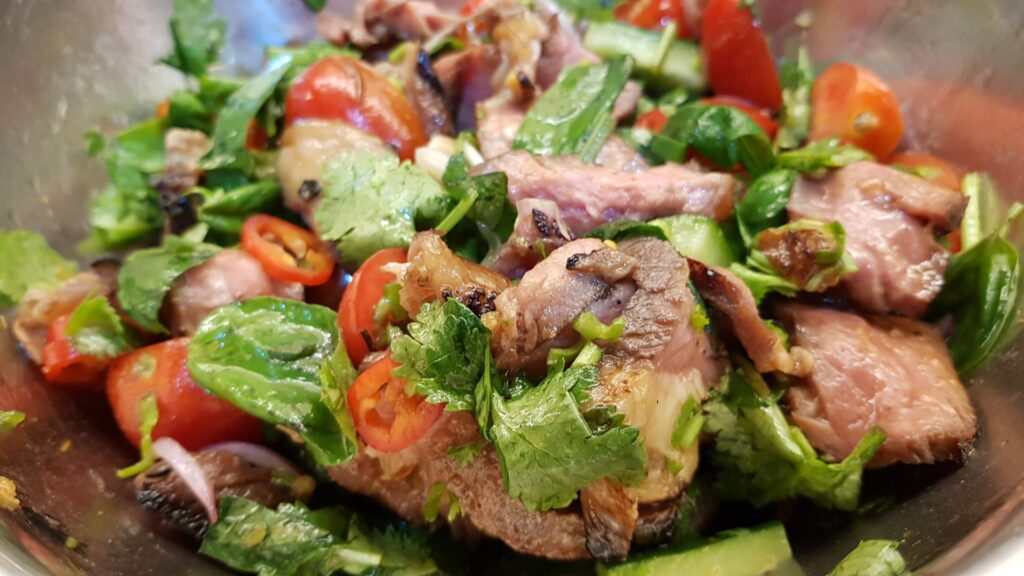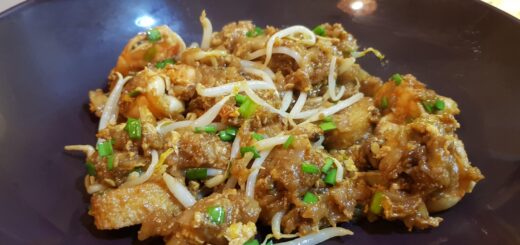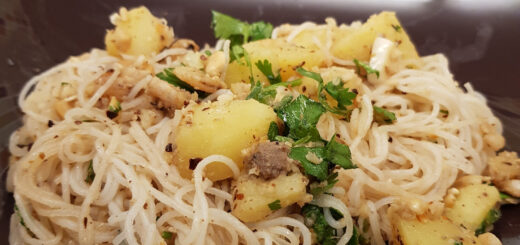Thai Beef Salad
From Malaysia to Myanmar to Indonesia and now … Thailand.
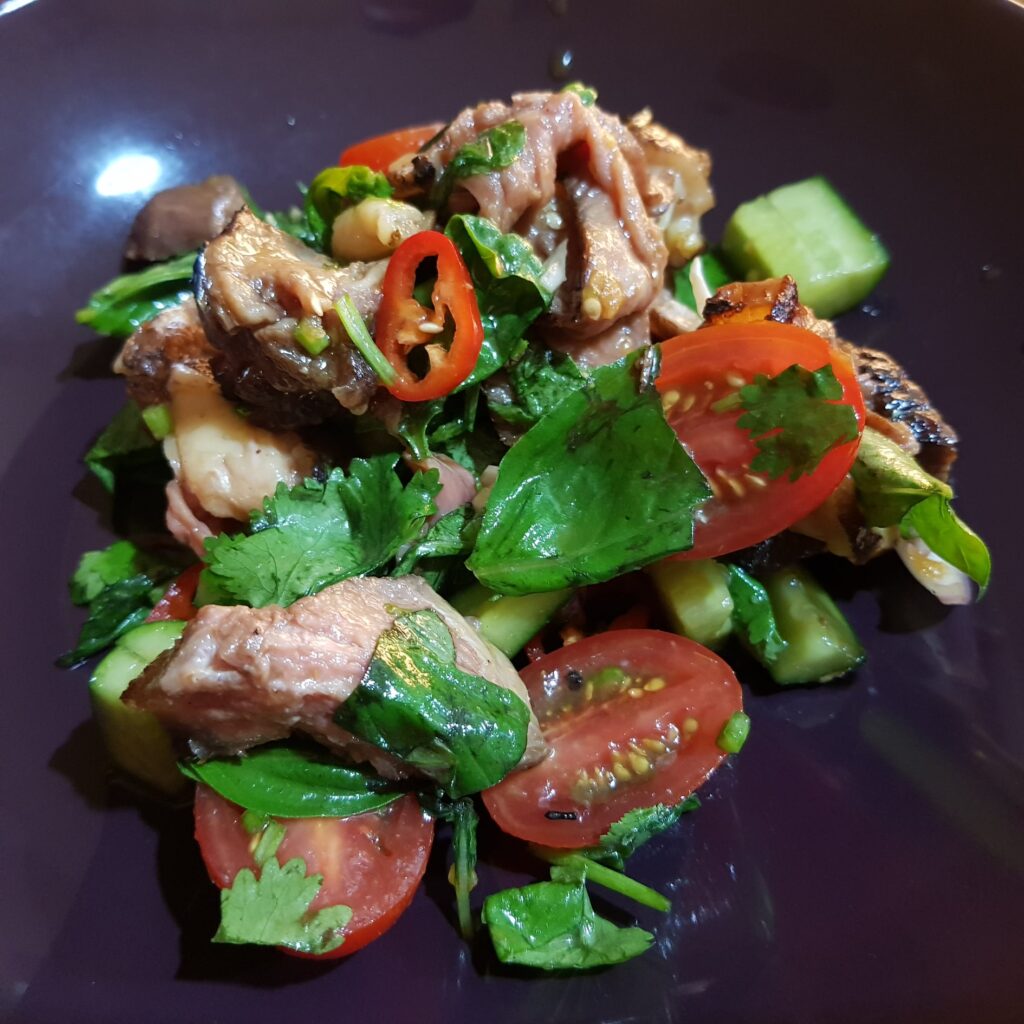
I saw someone making this online recently and decided to give it a try myself. Despite it being my first attempt, I was very satisfied with the results. Then again, given the amazing ingredients that go into this, it’s hard to go wrong.
While you can eat a Thai Beef Salad as an accompaniment to rice (or with sticky rice), it works well as a dish on its own, especially if you’re looking for a reduced carb meal.
Project notes are below.
To make marinade for the beef, we need Palm Sugar. The ones commonly found here is sold as “Gula Melaka” and comes in tubular blocks. I’ve seen “Thai Authentic Pure Palm Sugar” sold here, but for twice the price, and I think beyond a point, sugar is sugar, so I went with the local variety. It does appear much darker than the Thai variety.
https://eshop.tesco.com.my/groceries/en-GB/products/7004722086
To allow it to dissolve easier, the sugar needs to be shaved from the blocks (more surface area). I thought this would be difficult, but with a sharp chopper it turned out to be quite easy. As with any knife work, it is important to go slowly; when i tried to rush I nearly chopped my finger off.
I mixed the palm sugar shavings with 2-3 tablespoons of fish sauce (https://eshop.tesco.com.my/groceries/en-GB/products/7002155087)
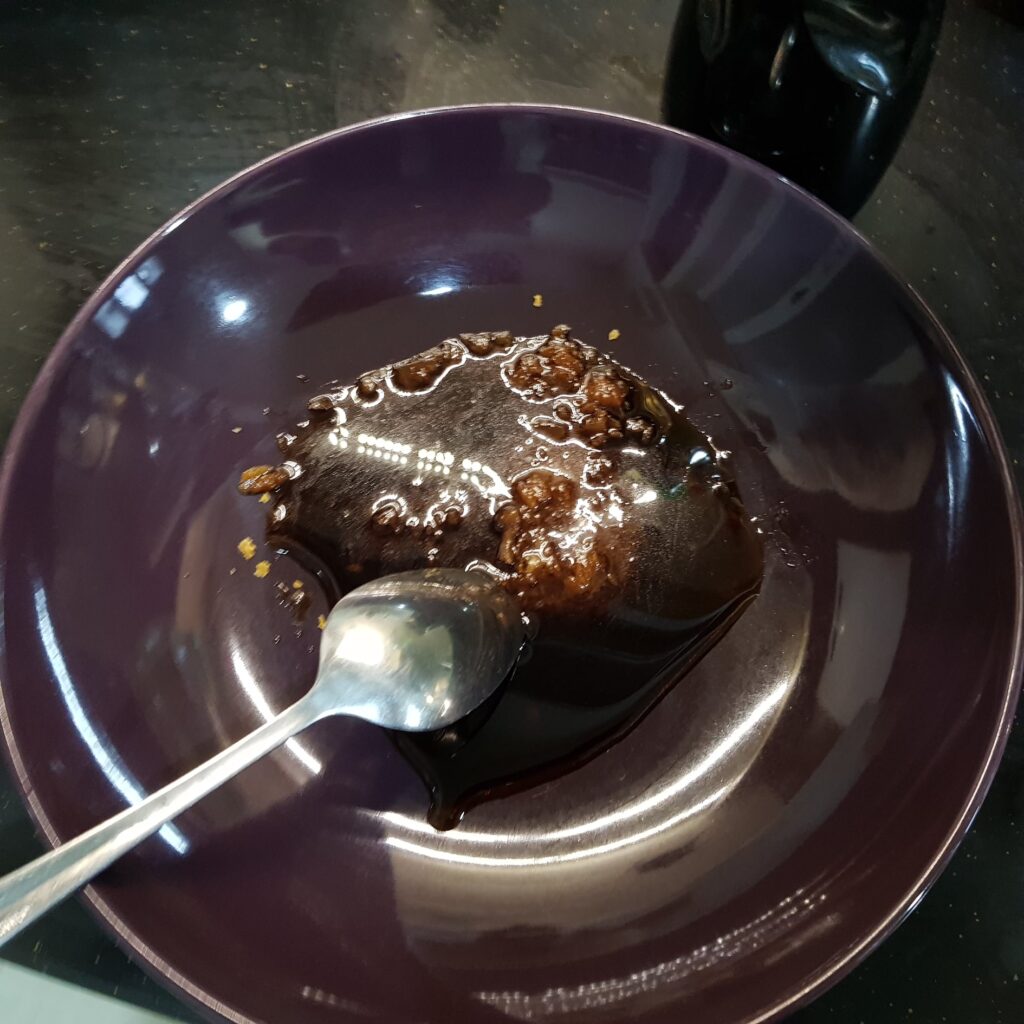
I also added a bit of ground pepper, and although it’s not called for in any recipe I’ve seen, but because I think it goes well, a pinch of Rosemary.
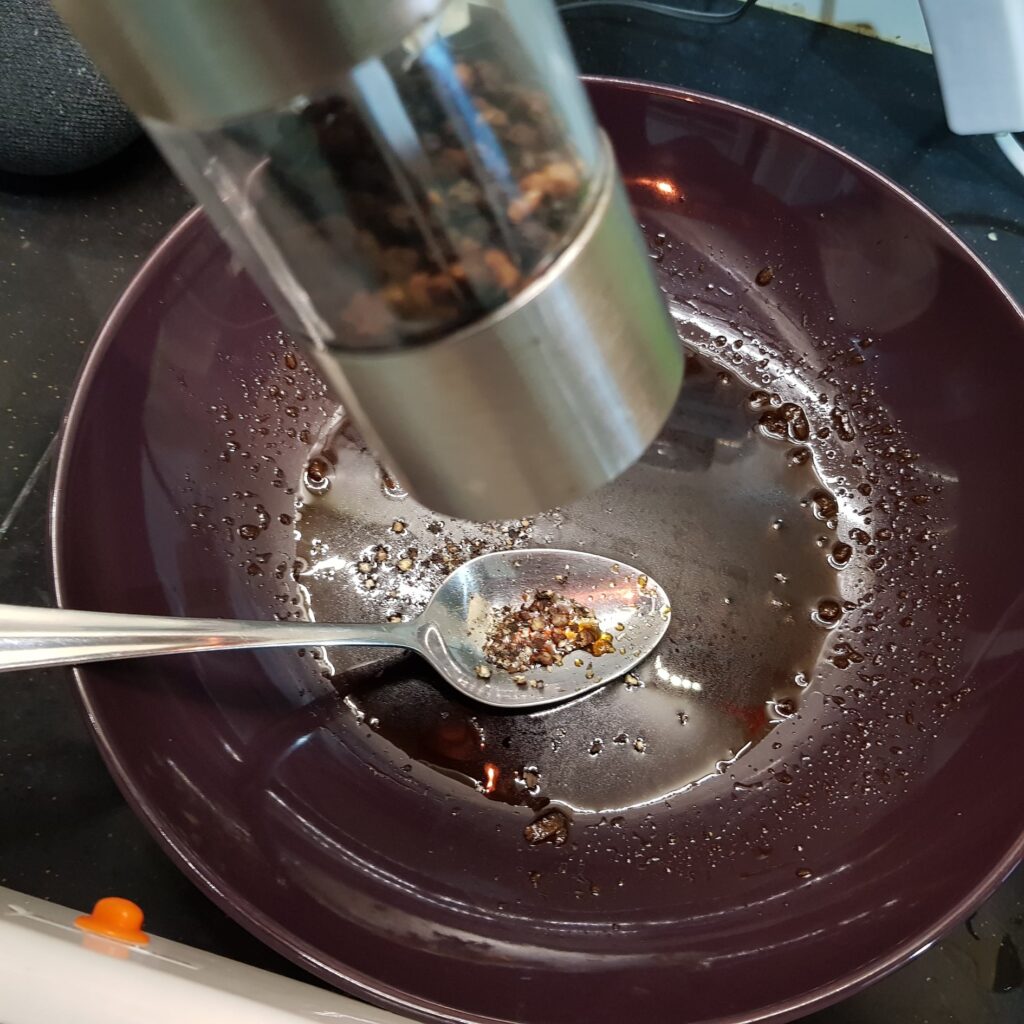
For the meat, I got this lovely chunk of Brasilian Striploin from MyGroser. Unlike the usual Australian version that I usually buy, this was a much larger piece at 380g, and thicker too ().
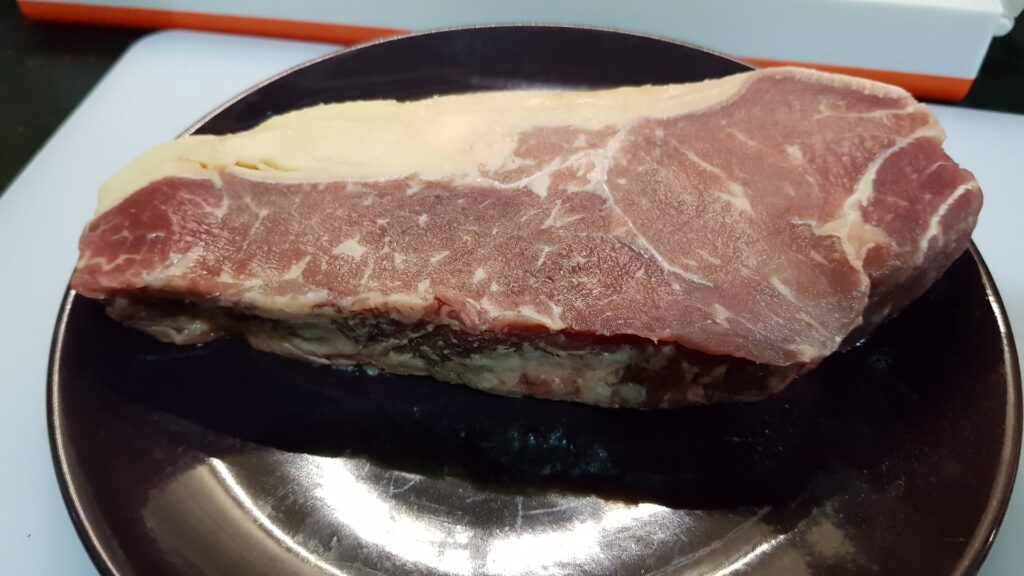
Most recipes call for grilling the steak in a pan, I find with this method it is tricky to control the level of done-ness. So I went with my standard sous-vide method. For this dish however, the meat needs to be marinaded — which brought up a question: do I marinade the beef first, and then sous-vide it, or can I marinade it while it is being sous-vide’d? Since the marinade wasn’t so acidic, I decided to marinade it during the sous-vide process itself.
The first step is to vacuum pack the beef + marinade in a food-grade plastic bag. I probably did not need as much marinade as I used — I had to wipe some of it out of my vacuum sealer.
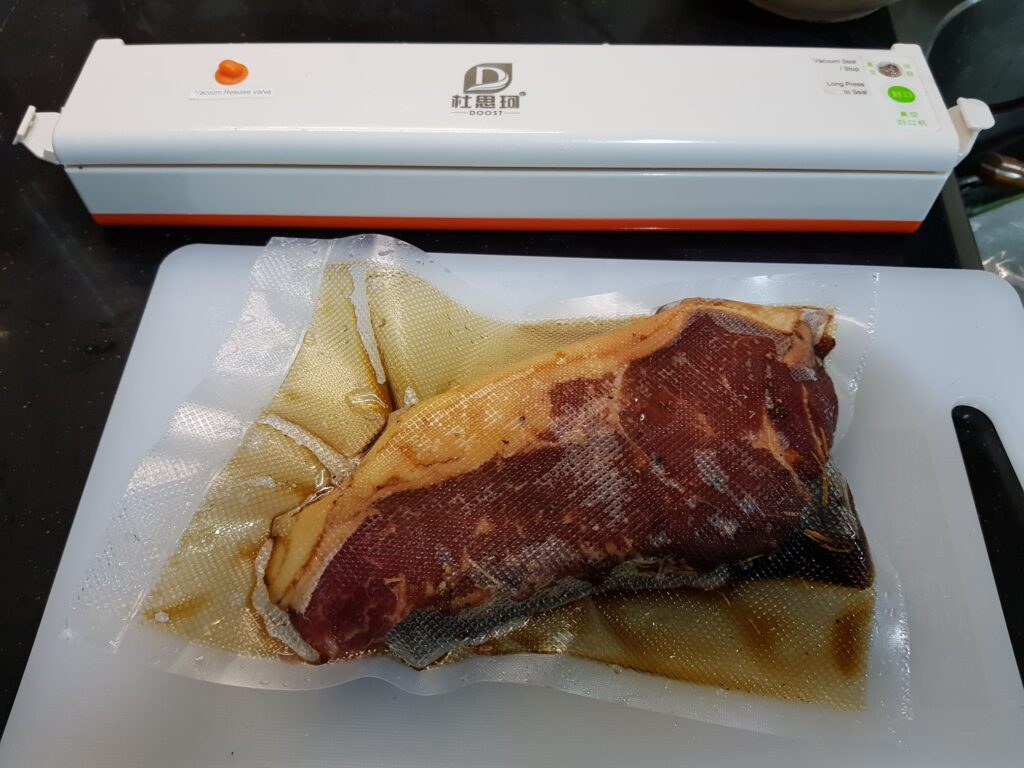
Then the bag with the meat and marinade is placed into a water bath with an imersion heater, set to 55C (54C if you are brave) for 1 hour.
By limiting it to 55C the meat will not go more than medium-rare pink, and the long period ensures that it is cooked to this level of done-ness evenly. No skill required.
More reasons why this is the best idiot-proof way: https://www.youtube.com/watch?v=LLzdrVh9Y7M&ab_channel=Alex

After an hour, the meat is removed from the bag and patted dry. It’s cooked perfectly pink : medium-rare all the way through. I let it sit for a bit to cool down. The next step is to heat up my cast iron pan until the oil in it starts to smoke (around 250C+) and brown the outside of the steak.
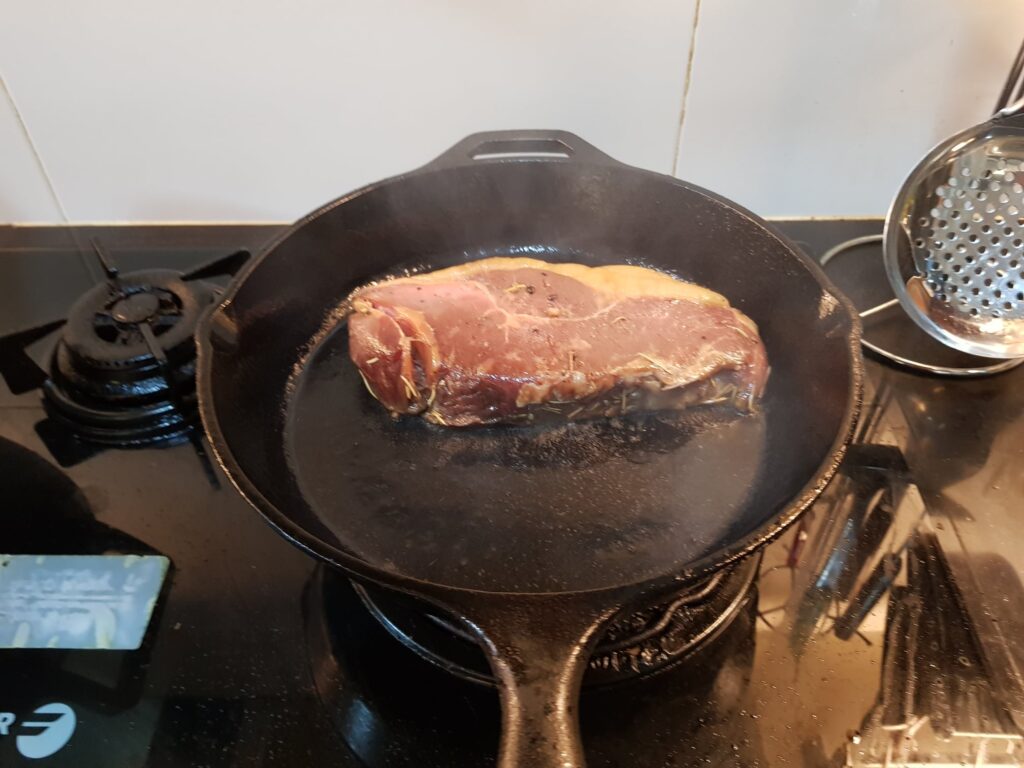
The flame is set to maximum, we want to brown the outside as fast as possible so that the insides remain medium rare.
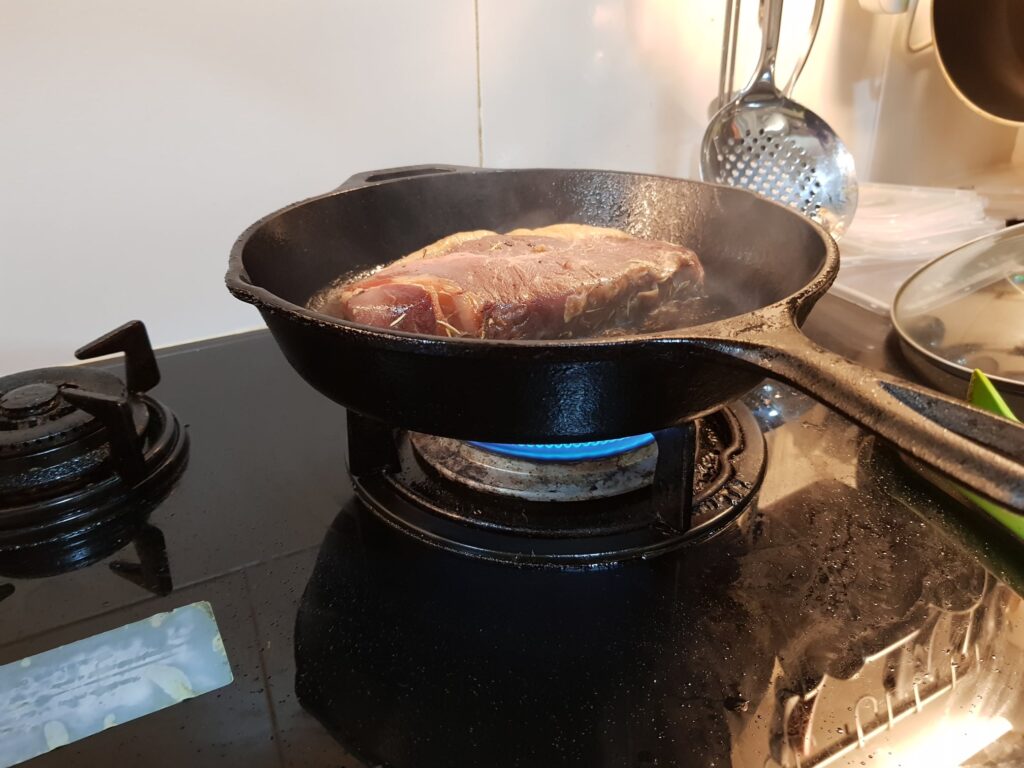
After about a minute, I flip the steak over … the underside was nicely browned. I think this was better than my usual steaks due to the presence of the sugar in the marinade, it caramelized on the surface and helped with the browning.
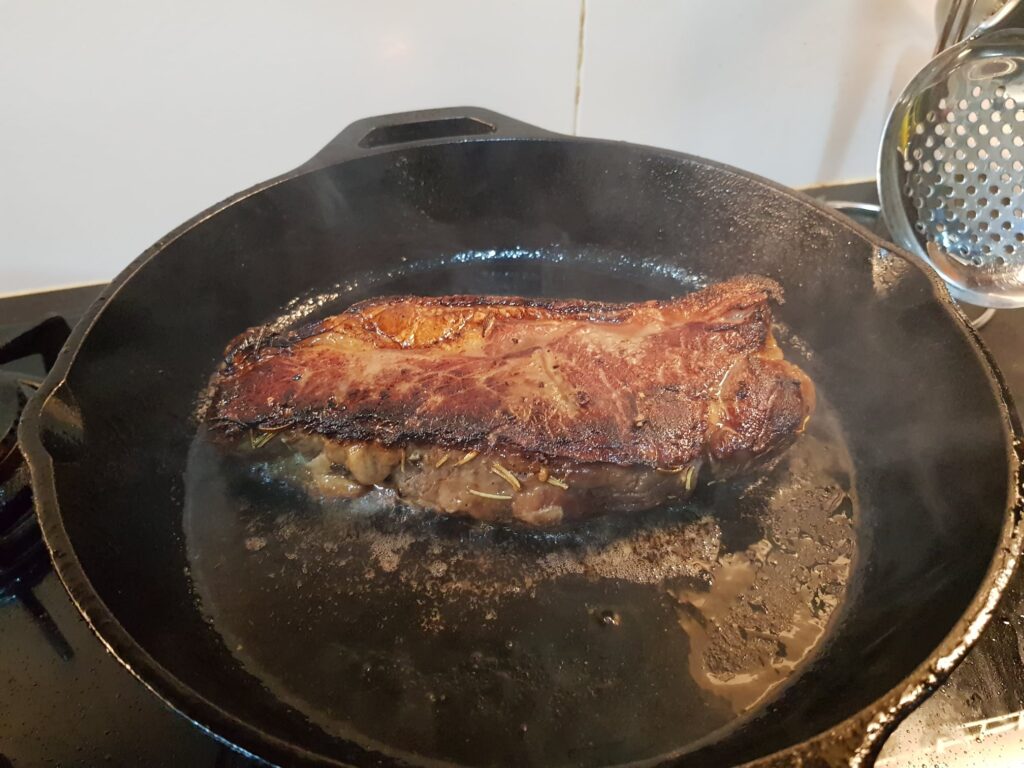
Total of a minute on each side, and another 30 seconds to render the strip of fat, and we’re done. Out of the fire and let it rest.

Now I have to get the rest of the salad prepared. We start with the dressing, which starts off again with palm sugar + 2-3 tablespoons of fish sauce, but this time we also add 2-3 tablespoons of vegetable oil, 1-2 tablespoons of light soy sauce, a teaspoon of minced ginger, a teaspoon of minced garlic, and the juice of a large lime.
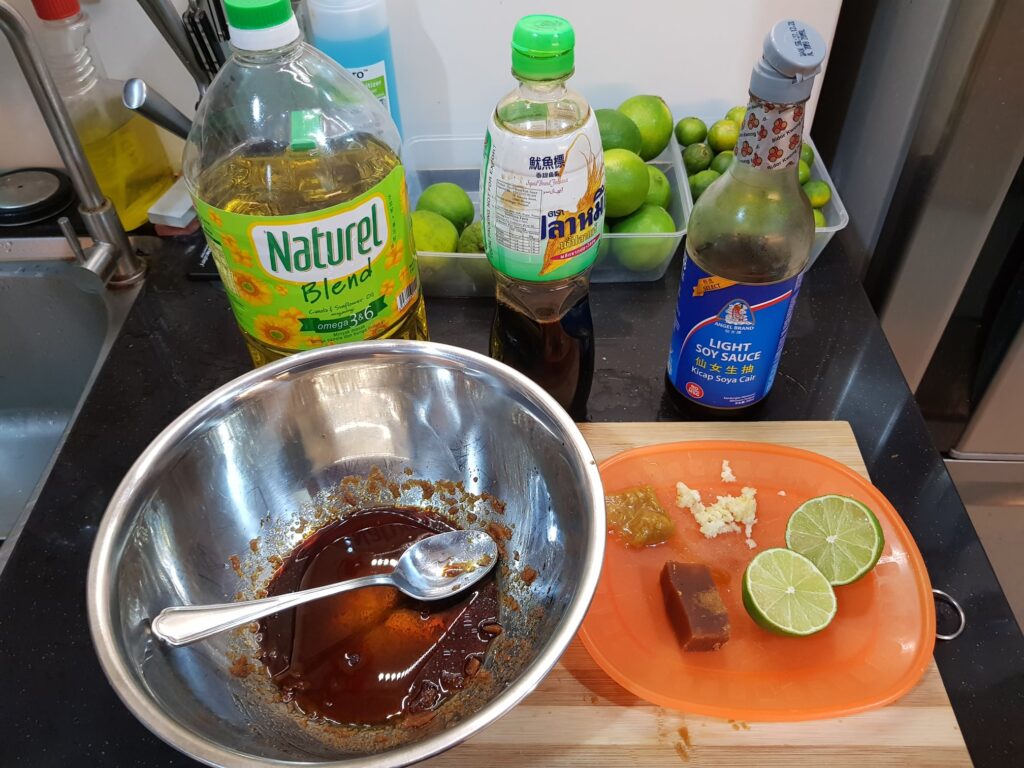
Next we stir the dressing so everything blends together and the sugar dissolves. Taste it and add more of any ingredients you think is lacking.
Next come the vegetables for the salad …
- some cherry tomatoes, sliced into two
- two shallots, thinly sliced
- one red chilli, sliced thinly
- a cucumber, julienned
- a handful of basil leaves (stems removed, and larger leaves cut into smaller pieces)
- a handful of mint leaves (stems removed)
- a bunch of coriander, roots removed, stems choped finely, and leaves chopped roughly
It really helps to get the freshest of ingredients.
This is my first time making a salad with basil and mint and I’m a bit wary … I’ve used basil before in making pesto and it can be a bit overpowering. I’ve never used mint leaves and feared that it would make the dish taste like breath mints.
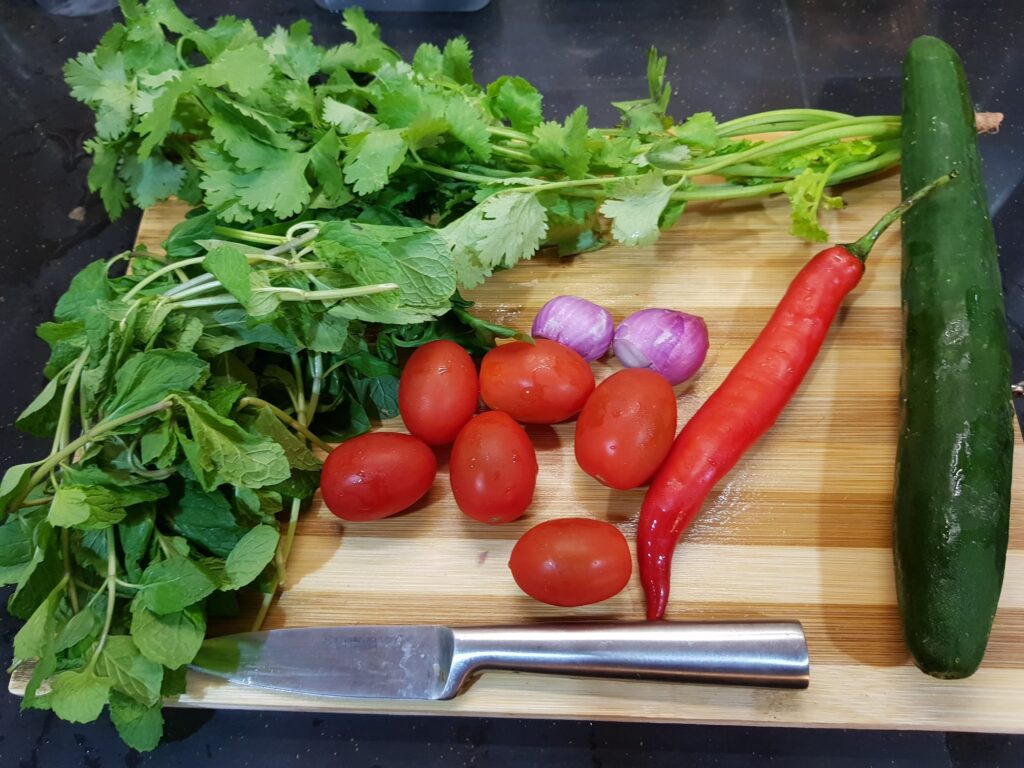
Tasting the leaves on their own doesn’t give you much clue of how this will turn out. Despite my reservations, I soldiered on and placed everything into a mixing bowl.
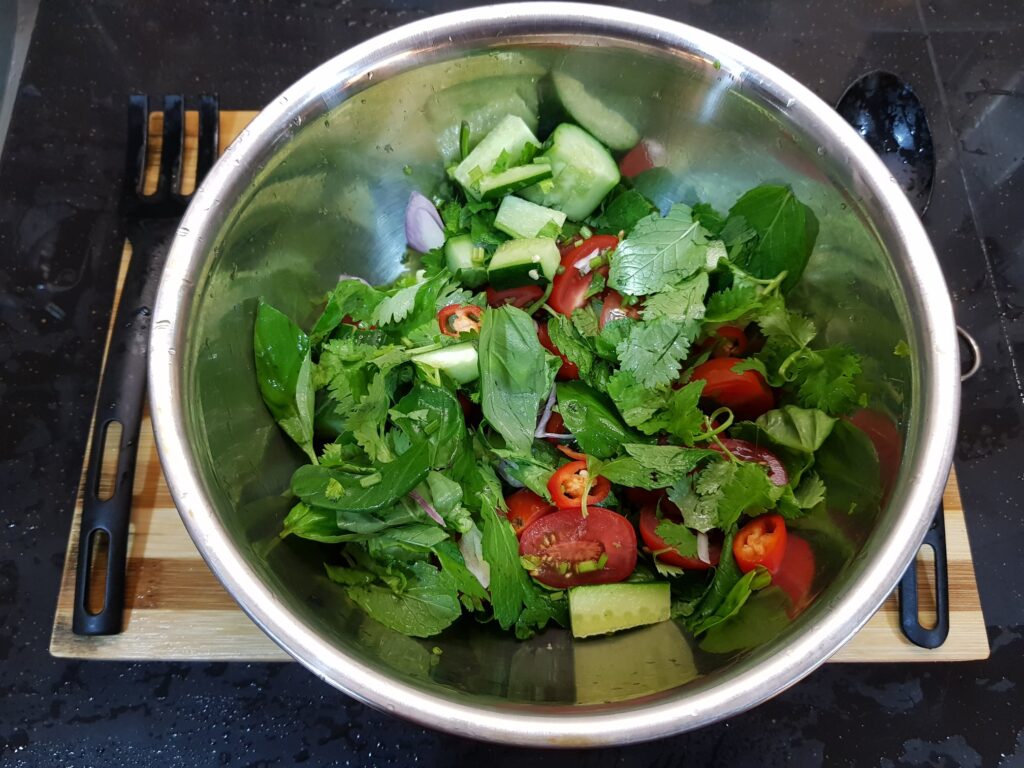
By now the meat has sufficiently “rested” and cooled down, and it is time to slice it. The difference between this dish and a regular steak meal is that the beef is sliced extremely thin — you want as much surface area as possible to contact the salad dressing.
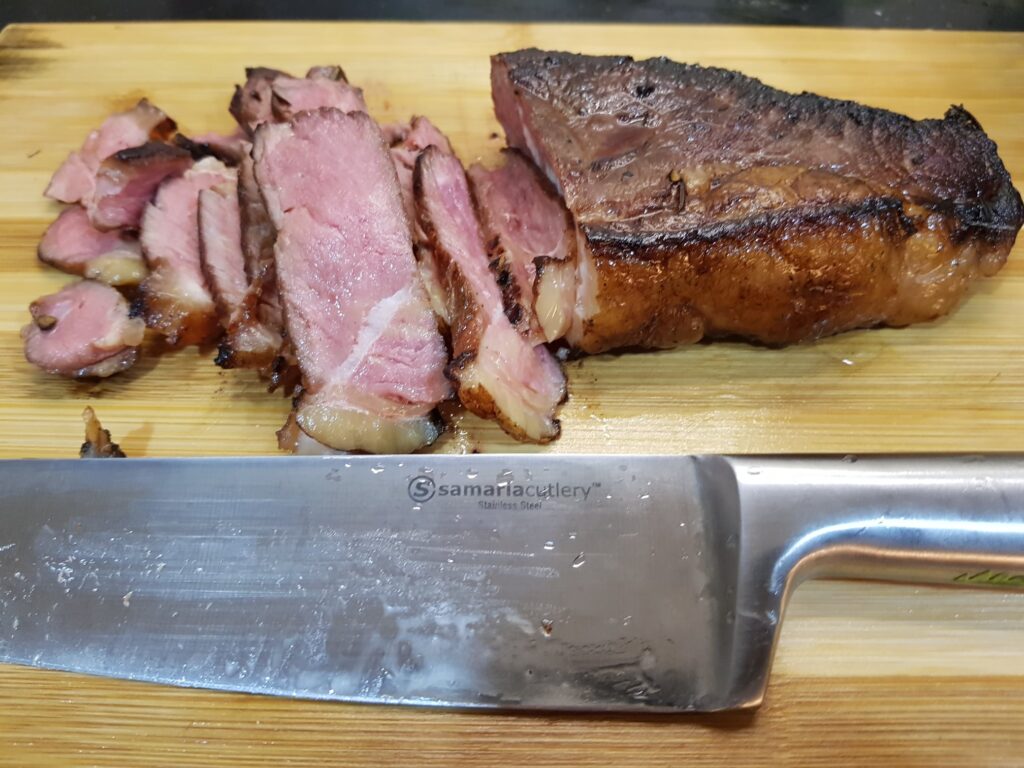
I couldn’t help taste a piece … this steak is gorgeous as it is already. The marinade didn’t over power it, instead there is just a slight hint of the flavor. I think I can afford to have it sit in the marinade for a bit prior to the sous-vide.
It tasted much better even than my usual striploin steaks. I don’t know if it was the marinade, the source country (Brasil vs Australia) or the fact that it was a thicker cut — the browning of the outside didn’t increase the done-ness of the insides so much.
A lot of people use rib-eye for this as it is very tender, but I found this striploin to be extremely tender and flavorful thanks to the sous-vide process.
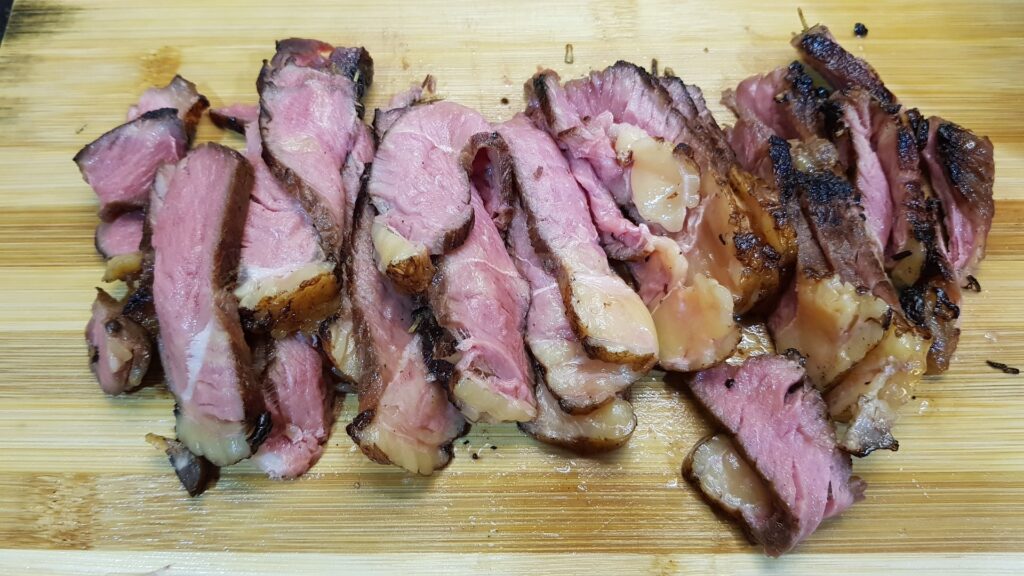
The meat is added to the bowl and the beef salad mixed. I added the dressing slowly while I tossed the salad around to help it spread evenly.

The result? For a first time thing, it tasted amazing!
